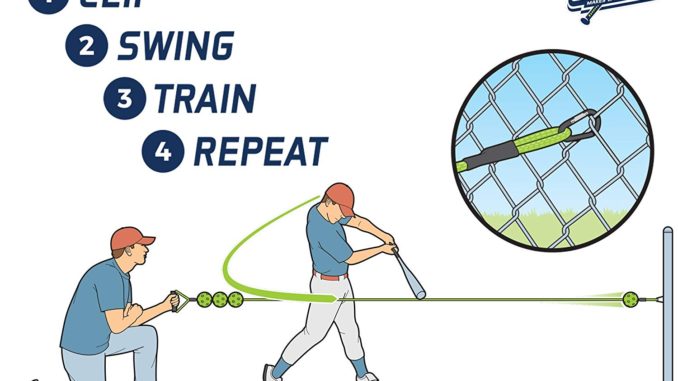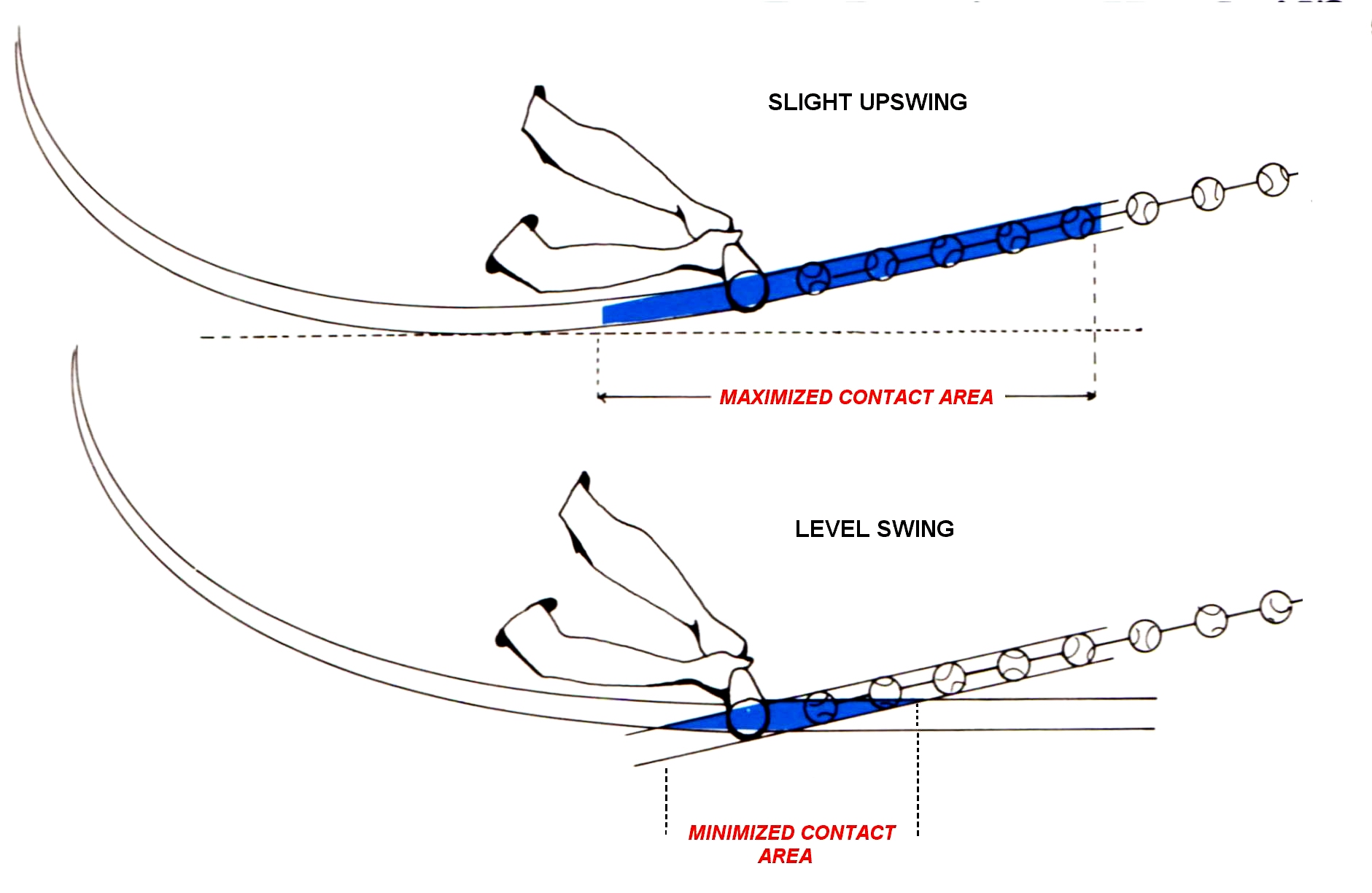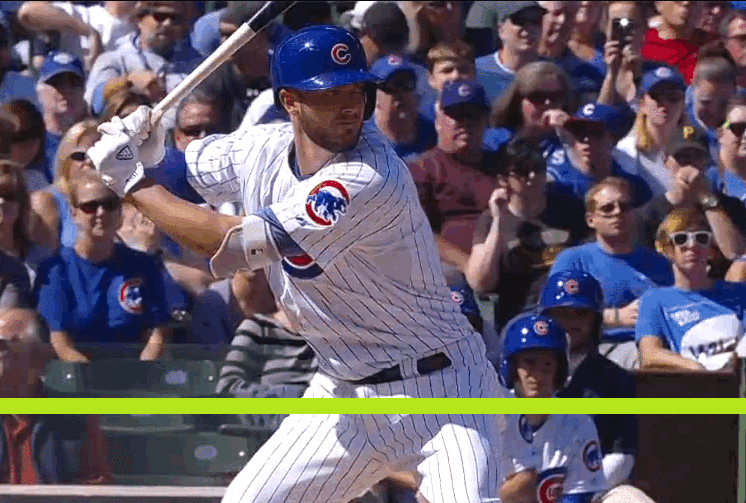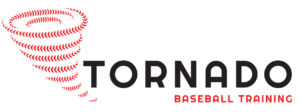
Hitting rope trainers are a common training aid that have been around for a long time and lately have been making a resurgence. They typically work by anchoring a rope on to a fence. The rope has wiffle balls strung through it and the set-up is similar to hitting off of a tee. The goal is to hit the ball hard down the rope. The rope acts as a constraint that forces you to “swing level” and “hit the top half of the ball”. If you have never seen one of these in person, check out the following video to see the rope trainer in action.
I am not a fan of these training devices. I think they encourage very bad habits and will most likely hurt your hitting rather than help your hitting. The design of the device shows a serious misunderstanding of proper hitting technique, the physics of the ball bat collision and pitch trajectory.
The first flaw in the design of the device, is that the rope is typically set up level to the ground. In other words, the rope runs parallel with the ground. You can see this in the main post graphic, and in the video above. This shows a lack of understanding of how pitches enter the strike zone. Pitches are always moving on a downward trajectory as they cross the plate. This applies to baseball and softball. Trying to hit the ball that’s coming in on a level trajectory is practicing something that doesn’t happen in games. Ideally you want to practice and prepare yourself for what is happening in games.

Since the ball is moving down through the strike zone you must swing with a “slight upswing” as Ted Williams said in his classic book “The Science of Hitting.” The following graphic is from “The Science of Hitting”

The rope being level also encourages you to hit the ball with a very low launch angle. In other words, hitting the ball back along the rope, level to the ground, is training you to hit low line drives and ground balls up the middle. That is not ideal. Good hitters are able to hit the ball for hard line drives and home runs, from foul pole to foul pole. I talk more about why you want to hit the ball up in the air, in a previous blog post here.
The level rope is not only unrealistic to what you will see in games as a hitter, it also physically prevents you from using proper technique to hit the ball. In order to hit a ball hard in the air for a line drive, you must hit the ball with the bat moving upward at contact. This is also known as having a positive attack angle. Since the bat is moving from below to above the ball, ideally you will hit the bottom half of the ball. You can see this in the following picture of Mookie Betts.

The rope blocks your bat from achieving this path. In the graphic above and below, the green line represents the rope of the rope trainer. You can see how the rope would block your barrel from getting into the proper position. Let’s look at another example in the following clip of Kris Bryant.

Notice how the barrel of the bat drops below the line of the rope and then moves back up towards the ball as the bat makes contact with the ball. That is excellent technique from Kris Bryant. The rope trainer would physically prevent you from having a similar technique. Your bat would hit the rope and you would be forced to use incorrect technique to hit the ball with a rope trainer. The goal of a hitting training device is to physically force you into proper technique. These hitting rope trainers do the opposite and force you into bad technique.
The reasons above are why I would strongly discourage anyone from using these types of training aids. There are many other training aids, that can be purchased or made at home, that are much more effective at developing a good swing. Check back to the blog frequently so you don’t miss future blog posts on training aids I like. Or don’t hesitate to contact me to schedule a lesson so we can develop a plan to be the best hitter you (or your loved one) can be.
